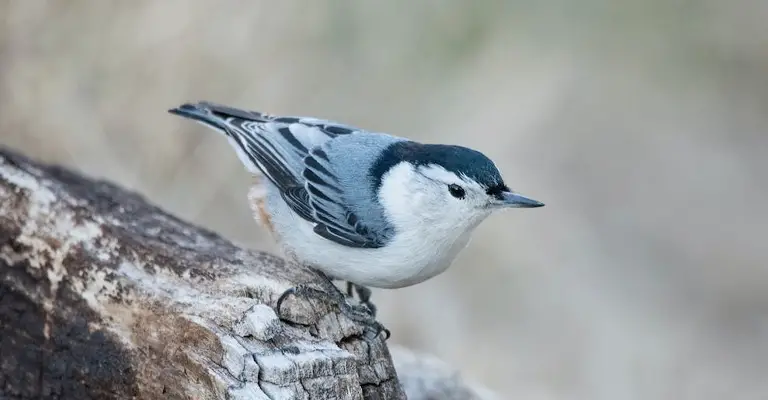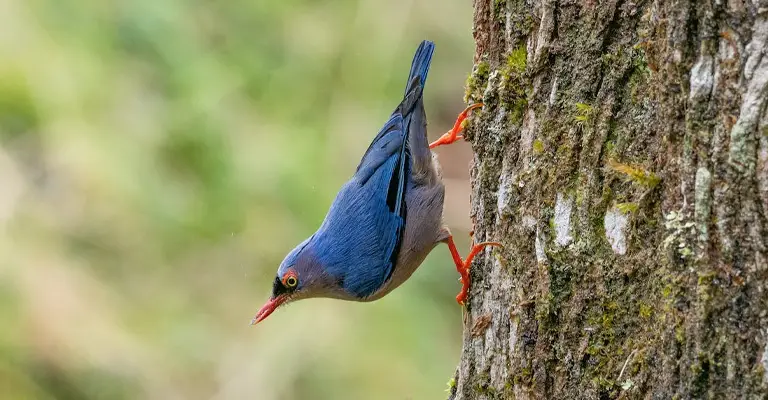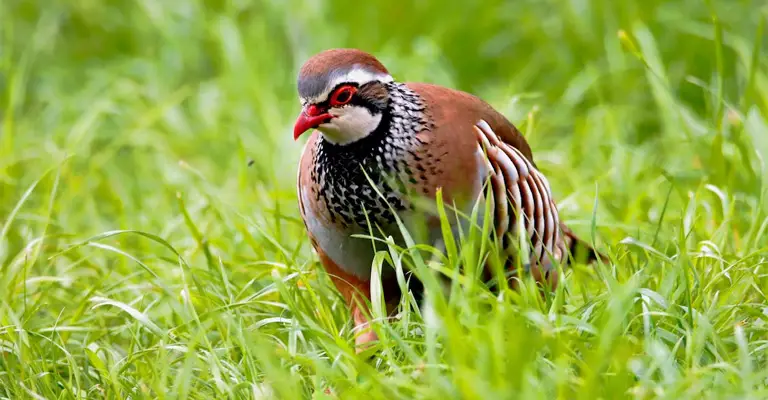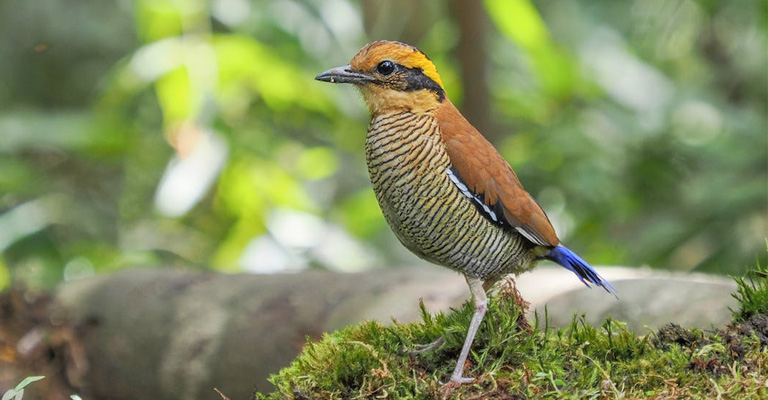Birds are not only beautiful creatures that grace our skies with their vibrant colors and melodious songs, but they also play a vital role in maintaining the balance of ecosystems.
Unfortunately, many bird species are facing numerous threats, including habitat loss, climate change, pollution, and collisions with human-made structures.
It is our responsibility to take action and protect these magnificent creatures for future generations to enjoy. By implementing simple yet impactful measures, we can make a difference in preserving bird populations.
In this article, we will explore what are the things we can do to save our birds. From creating bird-friendly habitats to advocating for conservation policies, together, we can contribute to the well-being and survival of our avian companions. Let’s dive into the ways we can actively participate in saving our birds.

What Are the Things We Can Do to Save Our Birds?
To help save our birds, there are several actions we can take:
Protect and Restore Habitats
Birds rely on specific habitats for nesting, feeding, and migration. By conserving and restoring natural habitats like forests, wetlands, and grasslands, we can provide them with suitable places to live.
Prevent Habitat Destruction
Avoid activities that lead to habitat destruction, such as deforestation, urbanization, and pollution. Support organizations and initiatives that work towards preserving bird habitats.
Control Invasive Species
Invasive species can outcompete native birds for resources and disrupt ecosystems. By managing and controlling invasive species, we can help protect native bird populations.
Reduce Pesticide Use
Pesticides can have harmful effects on birds, both directly and indirectly. Minimize the use of pesticides in your garden or opt for organic alternatives to protect birds and their food sources.
Prevent Bird Collisions
Birds often collide with windows, especially in urban areas. Install window decals or bird-friendly glass to reduce the risk of collisions. Keeping feeders and bird baths away from windows can also help.
Support Bird-friendly Practices
Create bird-friendly environments by planting native plants that provide food and shelter for birds. Avoid using bird nets that can entangle birds, and provide clean water sources like bird baths.
Promote Bird Conservation Awareness

Educate others about the importance of bird conservation. Encourage friends, family, and communities to take part in bird-watching, citizen science projects, and conservation efforts.
Advocate for Bird-friendly Policies
Support policies and regulations that protect birds and their habitats. Get involved in local conservation organizations and participate in public consultations to voice your concerns.
Prevent Bird Poaching
Illegal bird poaching is a significant threat to many bird species. Report any instances of bird poaching to the appropriate authorities and support organizations that work to combat wildlife trafficking.
Support Bird Research and Monitoring
Participate in citizen science projects that involve bird monitoring and data collection. This information helps scientists understand bird populations, migration patterns, and conservation needs.
Create Bird-friendly Buildings
Architects and developers can design buildings with bird-friendly features such as bird-safe glass, external shading devices, and green roofs. These measures can reduce bird collisions and provide nesting opportunities.
Reduce Light Pollution
Artificial lights can disorient migrating birds and affect their behavior. Use outdoor lighting responsibly by directing it downward, using motion sensors, and turning off unnecessary lights during migration seasons.
Promote Sustainable Agriculture

Encourage farming practices that minimize the use of pesticides and promote biodiversity. Support farmers who implement bird-friendly practices, such as maintaining hedgerows and providing nesting sites.
Support Bird Conservation Organizations
Donate to and volunteer with organizations dedicated to bird conservation. These organizations work on various fronts, including research, habitat protection, and public awareness campaigns.
Advocate for Protected Areas
Support the establishment and maintenance of protected areas, such as national parks and wildlife reserves. These areas provide crucial habitats for birds and other wildlife.
Reduce Plastic Waste
Plastic pollution poses a threat to birds through entanglement and ingestion. Minimize the use of single-use plastics, recycle properly, and participate in beach or habitat clean-up initiatives.
Be a Responsible Pet Owner
Keep cats indoors or use cat enclosures to prevent them from hunting birds. Ensure that pet birds are obtained legally and not from the illegal wildlife trade.
Support International Bird Conservation Efforts
Many bird species migrate across borders, so it’s important to support international collaborations and agreements that protect migratory routes and stop illegal bird trade.
Remember, the collective effort of individuals, communities, and governments is crucial in safeguarding our bird populations. By implementing these actions, we can make a positive impact on bird conservation.
How Can I Help Birds in My Home?

You can help birds in your home by taking the following steps:
Provide Bird Feeders
Set up bird feeders in your yard or balcony with a variety of bird-friendly foods like seeds, suet, or nectar. Ensure the feeders are clean and regularly filled to attract and support local bird populations.
Plant Native Vegetation
Create a bird-friendly garden by planting native plants that provide food, shelter, and nesting sites for birds. Choose a variety of plants that bloom at different times to provide a continuous food source.
Install Birdhouses or Nesting Boxes
Place birdhouses or nesting boxes in your yard to provide safe and suitable nesting sites for birds. Research the specific requirements of different bird species to ensure you provide the right type of nesting boxes.
Provide Clean Water
Set up a bird bath or shallow water source for birds to drink and bathe. Keep the water clean and change it regularly to prevent the spread of diseases.
Avoid Pesticide Use
Minimize or eliminate the use of pesticides in your garden. Pesticides can be harmful to birds and their food sources. Instead, opt for natural pest control methods or use organic alternatives.
Keep Cats Indoors
If you have pet cats, keep them indoors or use cat enclosures to prevent them from hunting birds. Cats are a significant threat to bird populations, and keeping them indoors helps protect both birds and cats.
Reduce Window Collisions
Birds often collide with windows, especially if they reflect the surrounding environment. Place decals, stickers, or window films on windows to make them more visible to birds. Closing blinds or curtains during the day can also help.
Participate in Citizen Science Projects
Contribute to bird research and monitoring by participating in citizen science projects. These initiatives collect valuable data on bird populations and behaviors, helping scientists better understand and conserve birds.
Educate Others
Share your knowledge and passion for bird conservation with friends, family, and neighbors. Encourage them to take similar actions to help birds in their own homes.
Remember, even small actions can make a difference in supporting bird populations. By creating a bird-friendly environment and spreading awareness, you can contribute to the well-being of birds in your home.
Laws Regarding Bird Protection

In the United States, several laws and regulations are in place to protect birds and their habitats. Here are some key laws regarding bird protection in the USA:
Migratory Bird Treaty Act (MBTA)
Enacted in 1918, the MBTA is one of the most important federal laws protecting birds.
It prohibits the hunting, capturing, killing, or possession of migratory birds, their nests, eggs, or feathers without appropriate permits. The MBTA covers over 1,000 bird species, including songbirds, waterfowl, raptors, and many others.
Bald and Golden Eagle Protection Act (BGEPA)
Passed in 1940, the BGEPA provides protection for bald eagles and golden eagles, including their nests and feathers.
It prohibits the killing, possession, or disturbance of these birds, their nests, or eggs, except under specific circumstances authorized by permits.
Endangered Species Act (ESA)
The ESA, enacted in 1973, protects endangered and threatened species, including birds. It prohibits the harming, killing, or capturing of listed bird species, as well as the destruction of their habitats.
The U.S. Fish and Wildlife Service (USFWS) and the National Marine Fisheries Service (NMFS) are responsible for implementing and enforcing the ESA.
National Environmental Policy Act (NEPA)
NEPA, established in 1970, requires federal agencies to consider the environmental impacts of their actions, including those affecting birds and their habitats.
It ensures that environmental considerations, including bird conservation, are integrated into federal decision-making processes.
Lacey Act
The Lacey Act passed in 1900 and amended several times, prohibits the trade of wildlife, including birds, that have been illegally taken, possessed, transported, or sold. It helps combat illegal wildlife trafficking and protects birds from being traded unlawfully.
State and Local Regulations
In addition to federal laws, individual states and local jurisdictions may have their own regulations and protections for birds. These can include specific hunting seasons, habitat conservation measures, and restrictions on activities that may harm birds.
It’s important to note that this is not an exhaustive list, and there may be additional laws and regulations at the federal, state, and local levels that protect birds and their habitats.
If you have specific concerns or questions about bird protection in your area, it’s advisable to consult with local wildlife authorities or conservation organizations for the most up-to-date information.
FAQs
No, not all bird species are protected by law in the United States. However, the Migratory Bird Treaty Act (MBTA) covers over 1,000 bird species, including songbirds, waterfowl, raptors, and many others.
Violating bird protection laws can result in significant penalties. Under the Migratory Bird Treaty Act (MBTA), individuals can face fines of up to $15,000 and imprisonment for up to six months for each violation. The penalties can be higher for organizations.
The possession of protected bird species, including those covered by the Migratory Bird Treaty Act (MBTA) and the Endangered Species Act (ESA), is generally prohibited without appropriate permits.
However, there are exceptions for certain species that are bred in captivity and obtained legally.
If you witness a violation of bird protection laws, you can report it to the appropriate authorities. The U.S. Fish and Wildlife Service (USFWS) is responsible for enforcing the Migratory Bird Treaty Act (MBTA) and the Bald and Golden Eagle Protection Act (BGEPA).
If you find an injured or orphaned bird, it is best to contact a local wildlife rehabilitation center or a licensed wildlife rehabilitator. They have the expertise and resources to provide appropriate care for the bird.
Parting Words
The fate of our bird populations rests in our hands. By taking steps to protect their habitats, reduce threats, and promote conservation efforts, we can make a significant impact on their survival.
Whether it’s creating bird-friendly gardens, supporting local conservation organizations, or spreading awareness about the importance of birds, every action counts.
Remember, even small changes in our daily lives can have a ripple effect on bird populations worldwide.
Let’s embrace our role as stewards of the natural world and work together to ensure a future where birds continue to soar through our skies, enchanting us with their beauty and enriching our ecosystems.
Together, we can make a difference and secure a brighter future for our feathered friends.